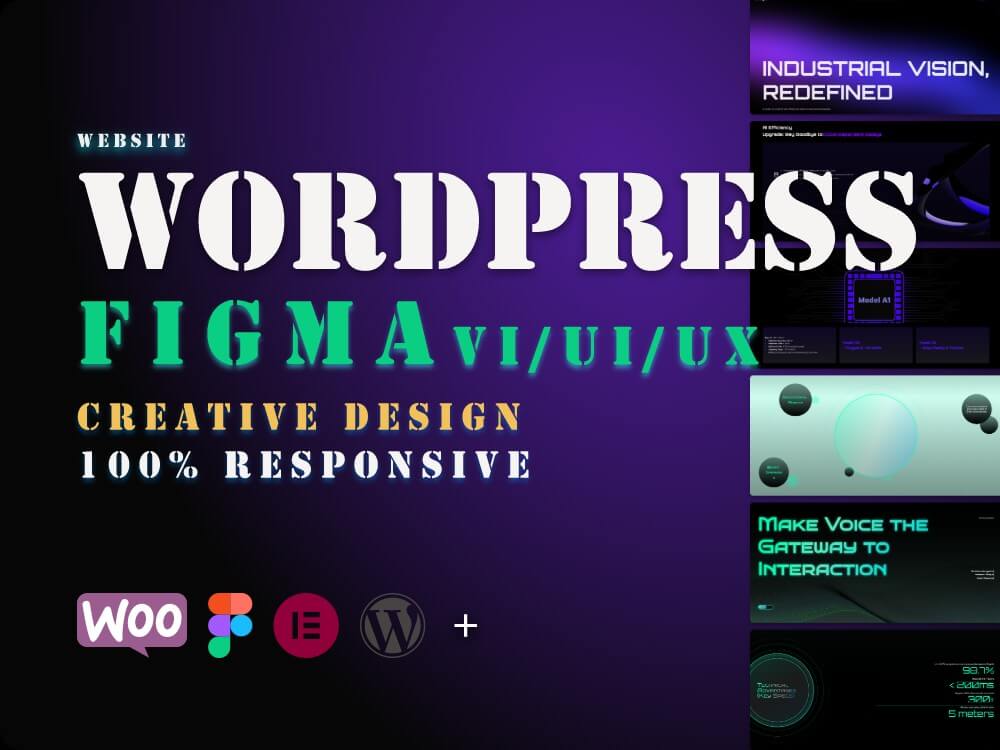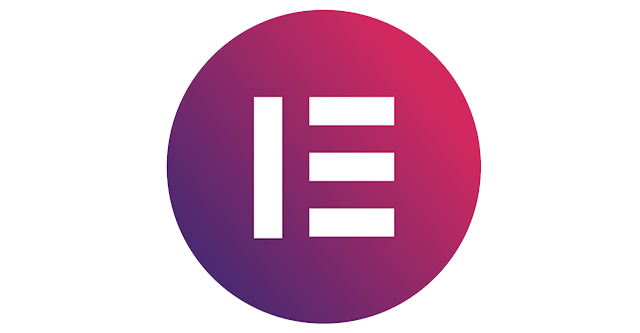Recommended Web Page Building Tools and Systems

In the Recommended Web Page Building Tools and Systems article, the author does not plan to teach from a purely technical angle, but instead, based on years of hands-on experience in the field of web design and development, aims to sort through and recommend those web design tools and site-building systems that are genuinely efficient, stable, and reliable in actual work. Whether it’s for initial design concepting or feature implementation, these tools play crucial roles at every key stage. They’re not only powerful and easy to learn but also rely on active developer communities and large user bases to continuously iterate and improve, creating a highly dynamic technology ecosystem. This article hopes to provide web designers, developers, and even brands or individuals with site-building needs with a practical reference checklist to accelerate the entire process from idea to launch.
To help readers with different needs quickly get the information they want, this article is divided into three relatively independent yet complementary main sections. You can freely read the sections that match your current focus. As always, the author has provided a clear table of contents with anchor links below. By clicking any section title, you can jump straight to that part, saving browsing time and improving reading efficiency. Whether you’re looking for the right web design tools or comparing the pros and cons of different site-building systems, this clear, well-organized table of contents will help you more quickly find the valuable content you need.
- Web Page UI Design Tool — Figma
- Recommended Open-Source Website Building System — WordPress
- Recommended Page Builder for Web Production — Elementor
一、Web Page UI Design Tool — Figma

Figma is currently one of the most widely used UI/UX design tools in the world. Thanks to its online collaboration features and user-friendly interface, it holds a crucial position in web and app prototyping. Whether you’re a freelance designer, a small development team, or working on large enterprise-level projects, Figma has become the preferred tool in the modern web design workflow due to its powerful and flexible feature set.
Figma’s Development History and Positioning
Since its official launch in 2016, Figma has quickly broken the limitations of traditional design tools with its "browser-based, no-client-installation-needed" concept, pushing UI design from local setups to full cloud collaboration. Its subsequent rollout of real-time multi-user editing, component systems, and an open API has further cemented its leading position in the UI/UX field. In 2022, Adobe’s announcement of acquiring Figma also indirectly confirmed its strategic value in the industry.
Detailed Explanation of the Design Interface and Workspace Tools
Figma’s main workspace is intuitive and efficient. On the left side is the layer and asset management area, the center is the canvas, and the right side features the properties panel. Designers can easily create frames, drag and drop shapes, add text, adjust styles, and use the Constraints system to achieve responsive layouts.
Systematic Management of Styles and Components
Figma allows designers to save frequently used colors, fonts, and effects as Styles and to build reusable UI modules through its Component system. This is extremely important for building a website’s design system. By setting up main components and variants, design teams can maintain consistent designs across multiple pages while making future maintenance easier.
Multi-person Collaboration and Team Design Workflow
One of Figma’s biggest advantages is real-time multi-user collaboration. Team members can edit the same file simultaneously, see each other’s cursor movements, add comments, and even make live changes during design meetings without needing to export or transfer files back and forth.
Additionally, Figma offers team project libraries to centrally manage components and styles for reuse across multiple projects, improving overall design efficiency. Project permissions also support fine-grained assignments to ensure data security and order in collaborative workflows.
Prototype Preview and Handoff Methods
Figma's built-in prototype link feature supports transforming static design drafts into interactive prototypes with click interactions, page transitions, and animation effects. This enables clients and developers to preview the real usage feel of a project efficiently.
For the handoff stage, Figma offers developers the Inspect mode, where they can view each element's size, spacing, color, and code annotations (including CSS, iOS, and Android formats), allowing seamless frontend integration without third-party tools.
二、Recommended Open-Source Website Building System — WordPress

Among the many website building systems, WordPress has long held the top spot as the preferred open-source website solution due to its powerful ecosystem, flexible open-source architecture, and a globally active developer community. Whether it's a content-based site, a corporate website, or a complex e-commerce platform, WordPress provides high degrees of freedom in site building, laying a solid foundation for future expansion and long-term operation.
If your website aims for sustainable operation, solid content structure, and future scalability—whether for brand presentation or commercial conversion—WordPress offers a flexible, stable, and highly customizable solution.
The Open-Source Advantages and Global Ecosystem of WordPress
WordPress is a completely open-source content management system (CMS), meaning anyone can freely download, modify its core code, and perform personalized development. Thanks to the openness of the GPL license, millions of developers worldwide contribute to its ecosystem, creating a massive market of themes, plugin systems, tutorial resources, and a robust network of hosting providers.
This brings high freedom to developers and significantly reduces custom development costs for users, especially suitable for long-term, controllable web projects.
Mature Themes and Plugin Ecosystem
WordPress offers tens of thousands of free and paid themes to quickly achieve various page styles. As for plugins, they cover nearly all website functionalities, from SEO optimization, security, and page builders, to form generators and API integrations. By combining plugins, users can build complex website structures quickly without any coding.
Powerful CMS Capabilities and Modular Content Management
As a mature CMS (Content Management System), WordPress offers extremely high freedom and extensibility in content creation, management, and publishing. Its core structure supports custom post types, custom fields, taxonomies, a native component library, and a media library, enabling users to organize and present rich and varied content formats.
Content Building Modules and Editing Experience
Through the built-in block editor, users can lay out pages in a true WYSIWYG manner, freely combining text, images, videos, charts, buttons, layout containers, and other content modules to build articles with both visual appeal and practical structure.
SEO-Friendliness and Content Management Advantages
Originally starting as a blogging system, WordPress has natural advantages in content structure and SEO strategy. Its output page structure is clean and clear, supporting custom permalinks, categories, tags, page titles, and meta descriptions, making it highly compatible with crawling and ranking by Google and other search engines.
Combined with plugins like Rank Math and Yoast SEO, WordPress users can easily manage sitemaps, structured data (Schema.org), Open Graph protocol, and [hreflang] multilingual tags to improve their site's performance in international search markets.
Expansion into E-commerce Platform: WooCommerce
For users who need to open an online store, WordPress’s e-commerce plugin—WooCommerce—offers a complete solution. As one of the world’s most popular open-source e-commerce systems, WooCommerce enables full transaction cycles including product display, shopping cart, order checkout, payment integration, shipping settings, and coupon systems.
Flexibility and Extensibility of WooCommerce
WooCommerce also has a strong extension ecosystem. Whether it's mainstream payment gateways like Stripe, PayPal, Apple Pay, or multilingual, multi-currency support, inventory management, membership systems, and affiliate logic—it can all be seamlessly integrated via extension plugins. For cross-border e-commerce users, WooCommerce also offers rich localization support and multi-channel integration capabilities.
三、Recommended Page Builder for Web Production — Elementor

In the WordPress website construction process, website builders are the key tools that connect design creativity with operational feasibility. For many content editors or operators without coding backgrounds, an excellent visual builder not only lowers the technical threshold for content updates but also empowers long-term site maintenance and continuous optimization.
Among many WordPress builders, Elementor has become one of the most popular page building solutions due to its outstanding user experience, powerful component system, and wide user base. It is suitable for beginners to quickly build pages and also provides developers with flexible custom development, serving as an efficient bridge between creative design and functional implementation.
Why Choose Elementor?
Visual Drag-and-Drop Experience, Zero Coding Required
Elementor offers a fully WYSIWYG visual interface, allowing users to drag and drop various page components—such as text, images, buttons, carousels, forms, icons, progress bars, tabs, etc.—onto the page, all with real-time preview and free arrangement. No coding is required to complete the webpage structure and style design, greatly lowering the threshold for website maintenance.
Rich Web Components and Dynamic Content Modules
Beyond basic content modules, Elementor provides advanced features like conditional display, dynamic data calls (e.g., post titles, user information, WooCommerce products), template reuse, and responsive controls. This enables users to build pages that are both visually appealing and dynamically interactive, suitable for websites with frequent content updates or those seeking customized interactive experiences.
Seamless Integration of Elementor with the WordPress Open-Source Ecosystem
Built specifically as a page editor for WordPress, Elementor is fully compatible with WordPress’s open-source architecture. It cooperates well with WordPress core content structures such as post types, custom fields, taxonomies, and supports most mainstream themes and plugins
Smooth Integration with Other Plugins
Elementor can seamlessly integrate with numerous WordPress plugins, such as:
- Working with SEO plugins (Yoast, Rank Math) to maintain optimized content structure;
- Linking with form plugins (WPForms, Fluent Forms) to collect user data;
- Collaborating with security plugins and firewall plugins to build a stable system environment.
Elementor is the ideal tool connecting creative expression and structural implementation. It not only lowers the threshold for web design but also maintains WordPress’s inherent openness, extensibility, and SEO-friendliness. For individuals or teams seeking a website building solution that allows self-managed content and professional design capabilities, Elementor is undoubtedly the top recommendation.
Highly Customizable and Developer-Friendly
Elementor is not only suitable for zero-code users but also provides various extension methods for designers and programmers with development needs. Users can directly insert custom HTML, CSS, and JS into components, use Elementor’s custom class names and IDs for precise layout and style control, and even develop their own widgets.
Balancing Performance and Extensibility
Paired with lightweight themes (such as Hello, Astra, GeneratePress), websites built with Elementor are visually rich while maintaining loading performance. It supports responsive design, lazy loading, and caching optimizations, suitable for access across various device scenarios.
Elementor + WooCommerce: Building a Visual E-commerce Experience
For websites requiring e-commerce functionality, Elementor Pro offers a dedicated component library built specifically for WooCommerce, helping users visually edit key pages such as product pages, shopping carts, and checkout pages, greatly enhancing the conversion experience.
Advantages of Visual Construction of E-commerce Processes
The greatest advantage of using Elementor to build e-commerce processes lies in its WYSIWYG drag-and-drop design experience, especially excelling in the visual editing of product pages. Users can freely arrange modules like product images, titles, prices, descriptions, reviews, inventory, and quickly build product display templates that match the brand tone.
In the checkout process, Elementor also supports customization of form styles and field layouts, making the shopping experience more aligned with user habits while improving conversion efficiency. Whether optimizing the layout of the address input area or adjusting the display order of payment methods, these can all be flexibly controlled through the page builder.
Additionally, for promotional displays, Elementor allows users to seamlessly embed promotional elements such as countdown modules, discount labels, and recommended product blocks into pages to enhance user purchase motivation. Furthermore, Elementor can integrate with various marketing plugins, such as email subscription systems and popup promotion tools, enabling e-commerce sites not only to sell products but also to have a complete marketing closed loop.
Conclusion
In the digital age, choosing the right web design tools and site-building systems not only affects website development efficiency but also profoundly impacts future content operations, brand building, and user experience. Whether you pursue highly flexible custom development or want to quickly build practical websites through visual builders, the solutions recommended in this article can serve as your technical selection reference. We hope these experiences help you avoid detours and accelerate the entire process from idea to implementation.
If you are looking for a team that can assist you in formulating web strategies, building professional websites, and achieving continuous optimization, feel free to contact Logic Thinking Digital Technology. Let us empower your brand to stand out with systematic technical solutions.
This article is copyrighted by Logic Digital Technology (SZLOGIC) . Personal sharing and learning are welcome. Unauthorized use for any commercial purposes or reproduction of this article is strictly prohibited.

























